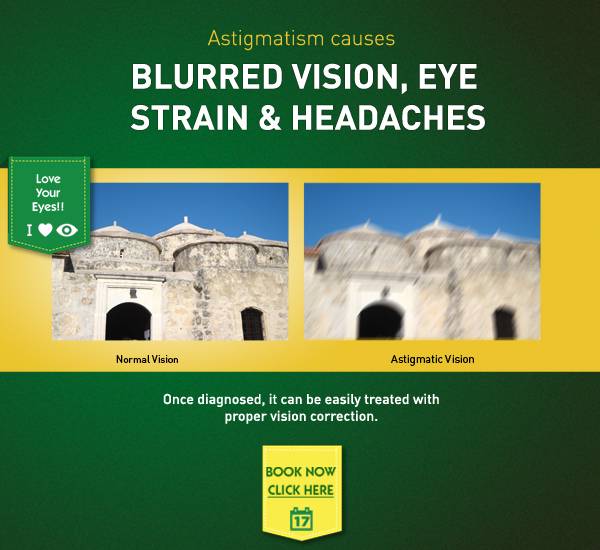Around your iris and pupil is your cornea, which is, under usual circumstances, round. As light enters your eye from all angles, part of the job of your cornea is to project that light, aiming it toward the retina, right in the rear part of your eye. But what does it mean if the cornea isn't perfectly spherical? The eye cannot direct the light correctly on one focus on your retina, and your vision gets blurred. Such a condition is called astigmatism.
Astigmatism is a fairly common vision problem, and mostly accompanies other vision problems that require vision correction. Astigmatism frequently occurs during childhood and can cause eye strain, headaches and the tendency to squint when uncorrected. With children, it can cause obstacles in the classroom, particularly when it comes to reading or other visual tasks. Sufferers working with particularly small or detailed objects or at a computer monitor for long periods may experience more difficulty with astigmatism.
Astigmatism can be preliminarily diagnosed by a routine eye test with an eye care professional and afterwards fully diagnosed with an automated refraction or a retinoscopy exam, which checks the severity of astigmatism. Astigmatism is commonly fixed with contacts or eyeglasses, or refractive surgery, which changes the way that light hits the eye, letting the retina receive the light correctly.
For contact lenses, the patient might be prescribed toric lenses, which allow the light to bend more in one direction than another. Standard contacts generally shift when you blink. But with astigmatism, the smallest eye movement can cause blurred sight. After you blink, toric lenses return to the same place on your eye to avoid this problem. You can find toric contact lenses as soft or hard varieties, to be chosen depending on what is more comfortable for you.
In some cases, astigmatism may also be fixed with laser surgery, or by orthokeratology (Ortho-K), a non-surgical alternative that involves the use of special rigid contacts to gradually reshape the cornea over night. You should discuss your options with your eye doctor to decide what your best option might be.
When demonstrating the effects of astigmatism to young, small children, have them compare the back of two teaspoons – one round and one oval. In the circular spoon, an mirror image will appear regular. In the oval spoon, their face will be skewed. And this is what astigmatism means for your vision; those affected end up viewing everything stretched out a bit.
A person's astigmatism evolves over time, so be sure that you are periodically making appointments to see your eye doctor for a proper exam. Additionally, make sure you have your children's eyes checked before they begin school. The majority of your child's education (and playing) is mostly visual. You can help your child make the best of his or her year with a comprehensive eye exam, which will help diagnose any visual irregularities before they begin to affect education, play, or other activities.
Learn More
Click here to read more about Astigmatism.
Click here to read more about LASIK & Refractive Surgery Co-Management
Click here to read more about Dry Eye Disease and Treatment.

